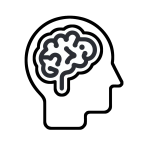The 13 Disability Categories
 Preparing to Learn
Preparing to Learn
The 13 Disability Categories
Think back to when you were a student attending a K-12 school. If you did not attend a public or private school during K-12, consider the students in your neighborhood or community. Did you have any friends, classmates, or community members who exhibited signs of a potential disability? How do you suppose their disabilities impacted their learning or other aspects of their lives?
IDEA’s 13 Disability Categories
To determine who qualifies to receive special education services at the K-12 educational level, the Individuals with Disabilities Education Act (IDEA) of 1984 identified 13 different disability categories. Each category includes a specific definition that describes the characteristics of the disability type and eligibility requirements. Most states strictly adhere to the definition of each category while some will allow a broader definition (i.e., in Minnesota, rather than adhering strictly to the definition of ED, the state acknowledges those who are labeled as socially maladjusted when determining eligibility for special education, using the term Emotionally and Behaviorally Disordered (EBD).
The IDEA recognizes the following disability types:
This module provides an overview of each disability type and includes strategies for educators to teach students with disabilities more effectively. According to the National Center for Education Statistics (2022):
In 2021–22, the number of students ages 3–21 who received special education and/or related services under the Individuals with Disabilities Education Act (IDEA) was 7.3 million, or the equivalent of 15 percent of all public school students. Among students receiving special education and/or related services, the most common category of disability was specific learning disabilities (32 percent).
As you can imagine, you will work with several students with disabilities throughout your career as an educator, and you will need tools to be an effective educator.
While working to support students with disabilities, you will want to be mindful of the identities your students hold. Historically, students of color have been disproportionally identified as needing special education services. Research shows that there is a much greater chance for a minority student or those from culturally and linguistically diverse backgrounds to be identified with a disability and placed in special education (Cruz and Rodl, 2018; Johnson, Anhalt, and Cowan, 2018; Monroe, 2005).
Compared to previous years, students receiving special education services currently spend more time in the general education classroom. In 1989, students receiving special education services spent only 31% of their time in a general education classroom; in 2020, students receiving special education services spent 66% of their time in a general education classroom (Riser-Kositsky, 2022).
The Importance of a Strengths-Based Approach
As a teacher, you will want to be careful not to make assumptions about your students’ abilities, but you also will want to be aware of signs that might indicate your students are struggling and would benefit from special education services. In addition, you will want to be aware of your students’ strengths, recognizing that all students have strengths regardless of their abilities. You should continue to treat students who are identified as having a disability in the same way you treated them before their diagnosis; knowing their disability does not help to understand who they are, but rather helps to identify how to support them best in the classroom and beyond. Schools use the diagnosis primarily to identify who would benefit from special education services and to receive available funding for providing special education services.
Strengths-Based IEP Documentation
Individualized Education Programs (IEP) support their individualized learning approaches for students with disabilities. As an educator, knowing the strengths of your students will help you develop an IEP that builds on students’ strengths rather than their weaknesses. Learn how to write strengths-based IEPs to support your students’ individualized learning needs better.
 Critical Perspective
Critical Perspective
Problems with the Outdated Wait-And-See Approach
In the past, educators took the outdated ‘wait and see’ approach to postpone the diagnosis of disabilities. According to the Learning Lab,
We often set children with learning differences up for failure through no fault of their own. Many school teachers take a ‘wait-and-see’ approach to learning, believing that struggling students will simply ‘grow out of it’ or catch up without much intervention. This approach can be disastrous for children with learning differences like dyslexia. They can hit a wall by third grade, known as the 3rd grade wall, when students are supposed to transition from ‘learning to read’ to ‘reading to learn.’ (2022)
But there’s a problem with this approach: Students who are already struggling to learn fail to get the support they need to effectively learn, and they fall even further behind.
The resources below further explain why wait-and-see is not the best approach.
Wait-to-Fail and Early Intervention
Different schools of thought influence the approach to serving students who may have disabilities, including wait-to-fail or wait-and-see and early intervention. In the past, many educators unintentionally set students with special needs up for failure by adopting a wait-to-fail approach, which resulted in students with disabilities not receiving the specialized learning strategies they needed to thrive until much later in their educational journeys.
Developed to counter this approach with early intervention, Response to Intervention (RTI) fits with the historic evolution to more prevention-focused instructional practices. RTI is “a systematic method for instruction and assessment of students”(No more “Waiting to Fail,” 2007, pg. 1), and this approach better supports students through earlier identification of their academic abilities. RTI received increased attention in the 2004 reauthorization of IDEA because the government realized that students in special education deserved the right to receive an equable education, especially those students with culturally diverse backgrounds (Kauffman, Badar and Wiley, 2018; Whitten, Esteves, and Woodrow, 2020). The reauthorization of IDEA stated that:
Schools will no longer be required to determine whether a student has a severe discrepancy between achievement and intellectual ability, the traditional method of identifying learning disabilities. Instead, schools are allowed to use evidence of a student’s failure to respond to instructional interventions as part of the data documenting the presence of a specific learning disability. (No More “Waiting to Fail,” 2007, pg. 1)
Early intervention practices like RTI help ensure equal educational opportunities for all students by providing mechanisms for students to receive supplementary instruction without the stigmatizing effects of a disability label. Under prior special education laws, students had to show a deficit – such as a developmental disability or a specific learning disability – to qualify for specialized instruction.
Becoming eligible for special education services under the former laws was time-consuming and often meant that a student must fail first before receiving additional instructional support. RTI also replaced the need to show a deficit prior to special education qualification by eliminating the wait-to-fail practice and changing the way educators approached special education.
“Under RTI, schools must not only ensure that they are providing scientifically based instruction in the general education program but also provide intervention to students not succeeding in the general education program before considering them for special education placement” (No More “Waiting to Fail”, 2007, pg. 3).
 Reflection
Reflection
The 13 Disability Categories
Now that you know a little more about the 13 disability types recognized by the Individuals with Disabilities Education Act (IDEA), consider the following reflection questions:
- What is the difference between having a disability and having a disability that is documented and recognized by the IDEA?
- What are some things you are hoping to learn about a specific disability type?
- As you go into the field of teaching, how will you ensure that you are able to support the diverse needs of your students?
References
Cruz, R. A., and Rodl, J. E. (2018). An integrative synthesis of literature on disproportionality in special education. The Journal of Special Education. 52(1), 50-63. doi:10.1177/0022466918758707
Johnson, A. D., Anhalt, K., and Cowan, R. J. (2017;2018;). Culturally responsive school-wide positive behavior interventions and supports: A practical approach to addressing disciplinary disproportionality with African-American students. Multicultural Learning and Teaching, 13(2) doi:10.1515/mlt-2017-0013
Kauffman, J. M., Badar, J., and Wiley, A. L. (2018). RtI: Controversies and solutions. In Handbook of response to intervention and multi-tiered systems of support (pp. 11-25). Routledge.
Monroe, C. R. (2005). Why are “bad boys” always African American? Causes of disproportionality in school discipline and recommendations for change. The Clearing House, 79(1), 45-50. Retrieved from http://library.capella.edu/login?qurl=https%3A%2F%2Fsearch.proquest.com%2Fdocview%2F196855356%3Faccount
N. A. (2007). No more “waiting to fail”. ASCD. (65, 2). Retrieved from https://mnlowincidenceprojects.org/Projects/ohd/ohdResources.html
National Center for Education Statistics. (2022). Students With Disabilities. Condition of Education. U.S. Department of Education, Institute of Education Sciences. Retrieved November 27, 2023 from https://nces.ed.gov/programs/coe/indicator/cgg
Riser-Kositsky, M. (2019, 2022). Special education: Definition, statistics, and trends. EducationWeek. Retrieved from https://www.edweek.org/teaching-learning/special-education-definition-statistics-and-trends/2019/12
Whitten, E., Esteves, K. J., and Woodrow, A. (2020). RTI success: Proven tools and strategies for schools and classrooms. Free Spirit Publishing.
Emotional Disordered
is a multi-tiered instructional framework [and] schoolwide approach that addresses the needs of all students, including struggling learners and students with disabilities, and integrates assessment and intervention within a multi-level instructional and behavioral system to maximize student achievement and reduce problem behaviors
